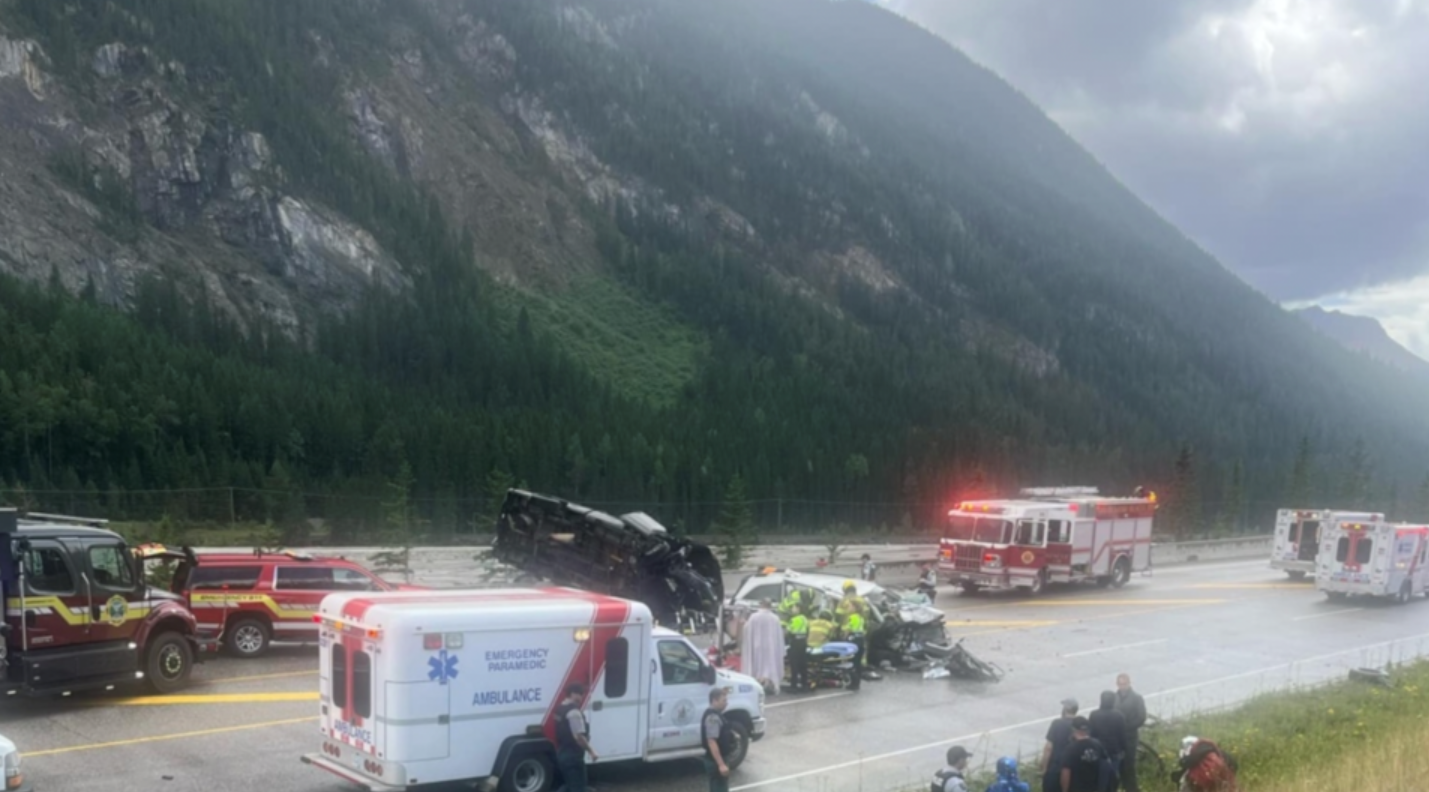
Petition to Twin Highway Through Yoho National Park Delivered to Parliament
Rocky Mountain Outlook
Cathy Ellis
FIELD, B.C. – A petition spearheaded by a Field resident to get a deadly stretch of the Trans-Canada Highway twinned through Yoho National Park has been delivered to federal parliament.
Mel Arnold, a federal Conservative MP representing Kamloops–Shuswap–Central Rockies, presented the petition signed by 764 concerned people on Sept. 19.
Officials say the highway has claimed too many lives in recent years, including nine in 2022 alone and another one in summer 2024.
“This section of the highway is truly outdated and often sees serious and fatal accidents,” Arnold said in parliament.
“The government owes a duty to its citizens to keep them safe. It is time to get this highway done and fixed.”
The petition spearheaded by Field resident Alex Goatcher calls on the government to twin the remaining 40-kilometer two-lane section of highway between Sherbrooke Creek and the western end of Yoho National Park.
It also calls for wildlife overpasses and underpasses as well as wildlife exclusion fencing as part of the twinning construction.
“I finished with 764 signatures and I needed 500 and a lot of that came like within a week and a half of before it closed,” said Goatcher.
“The government has 45 calendar days after September 19 to give a response.”
The Trans-Canada Highway in Yoho National Park – part of Canada’s national transportation corridor, serving as the most important commercial trade highway between western Canada and the rest of the country – falls under federal jurisdiction for maintenance, upgrades, and safety.
The highway in Yoho and Banff national parks was built as a scenic, low-volume, two-lane highway in the 1950s. Today, it is a major commercial highway in Canada and the primary access route for five million visitors to Canada’s mountain national parks.
According to Parks Canada, annual average daily traffic volumes in Yoho National Park reach nearly 7,500, jumping to approximately 14,500 vehicles per day in the busy summer months. Summer volumes are forecast to reach at least 23,000 a day by 2046.
Twinning of the first six kilometers of the highway in Yoho National Park from two to four lanes to improve safety, along with wildlife exclusion fencing and wildlife crossing structures, was completed by Parks Canada in 2018.
The federal agency approved preliminary design and a detailed impact assessment for the remaining 40-km section between Sherbrooke Creek and the western end of Yoho National Park in 2021 – but no dollars have been set aside for the project.
According to Parks Canada, the highway through Yoho National Park has a higher accident rate than average for similar highways in B.C., and forecast traffic growth will contribute to an increase in motor vehicle accidents.
ICBC (Insurance Corporation of British Columbia) data indicated there were 144 reported vehicle collisions over a four-year-period from 2020-24 and 17 reported wildlife collisions. From 2019 to 2024, BC ambulances responded to between 18 and 47 vehicle collisions each year in the national park.
In the case of the fatal accident in summer 2024, two patients were airlifted to hospital, including one via STARS air ambulance and another in a fixed-wing plane. One later died in hospital. Four others who were injured went to area hospitals by ambulance.
Four ambulances with primary care paramedics, an advanced care paramedic response unit, an air ambulance with critical care paramedics, a Banff ambulance with advanced care paramedics, and a STARS air ambulance all responded.
Two of the people were extracted from their mangled vehicle by Lake Louise Fire-Rescue and Golden Fire-Rescue.
The highway was shut down for eight hours.
Goatcher saw the aftermath of the Aug. 7, 2024, head-on collision from his front yard that killed a 68-year-old woman on vacation from Texas.
He said it is well past time the highway is twinned before more lives are lost.
“It seems to be a very united project,” he said.
Goatcher said the untwinned section of highway is dangerous in both summer, when traffic volumes are high and speeding is not uncommon, and in winter when mountain driving conditions deteriorate substantially.
As part of the twinning, he said he hopes the highway will be redesigned to give the snowplows more room to push the snow off of the highway. “Sometimes, like on the hill, the shoulder disappears,” he said.